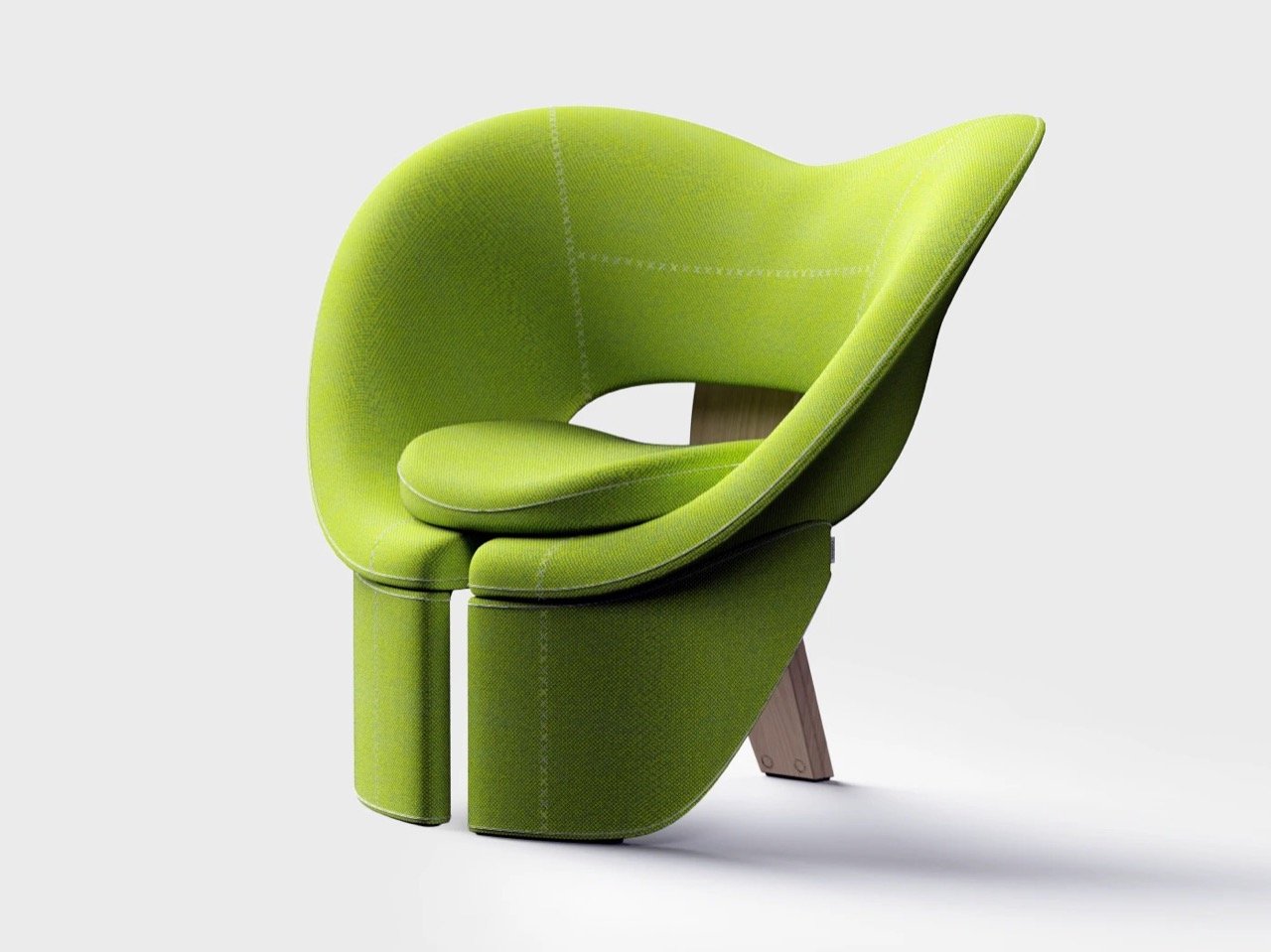Technology
Innovative Himalaya Pelvis Chair Transforms Ergonomic Design

The Himalaya Pelvis Chair, designed by Mingyu Seo and Eojin Jeon, takes inspiration directly from human anatomy, specifically the structure of the pelvis. This unique piece of furniture, showcased on the creative platform Behance, challenges conventional notions of design by creating an object that marries comfort with biological form. The chair aims to redefine how we perceive the relationship between our bodies and the furniture we interact with daily.
The design mimics the pelvic bone, emphasizing its ability to cradle and support. Unlike other furniture that hints at natural forms, the Pelvis Chair is an explicit representation of anatomical engineering. This direct reference sets it apart from previous biomimetic designs, such as the curves of an Eames lounge chair or the algorithmic structures by designer Joris Laarman. The Pelvis Chair offers a clear and educational link between its shape and its biological inspiration, steering away from abstract interpretations.
Design Features and Variants
The Himalaya Pelvis Chair comes in two distinct variants, each showcasing different material contexts. The vibrant green model features a heavy-duty textile with a visible weave, reinforcing both durability and visual softness. This version is adorned with prominent stitching, particularly cross-stitch details, which not only enhances its aesthetic but also articulates the chair’s curves, giving it a hand-finished quality.
In contrast, the speckled blue variant appears to be crafted from molded polymer or composite resin. This material choice transforms the chair from a cozy lounge piece into a robust, sculptural object, suitable for public spaces or minimalist interiors. Both models are supported by a Y-shaped leg made from brushed aluminum or light-finished wood, such as ash or oak, with exposed hardware that adds an honest, engineered touch to the overall design.
The chair’s ergonomic features are integral to its concept. The deep, contoured seat and high, enveloping backrest directly reference the iliac crest and sacrum, providing secure support for the sitter. A keyhole-shaped opening at the base of the back not only echoes the sacral opening but also reduces the piece’s visual mass and enhances flexibility. This thoughtful design ensures that the anatomical mimicry serves an ergonomic purpose rather than merely a narrative one.
Aesthetic Appeal Meets Functionality
The Pelvis Chair exemplifies a successful blend of intellectual rigor and aesthetic appeal. It manages to be a high-concept piece without compromising on comfort, making it one of the standout conceptual furniture designs of the year. Its refined execution elevates it beyond a mere anatomical replica, transforming it into an elegant piece of art that invites users to rethink their interactions with furniture.
As the world of design continues to evolve, the Himalaya Pelvis Chair represents a significant step toward integrating biological principles into functional art. It prompts a deeper consideration of how our physical forms influence the spaces we inhabit and the objects we choose to surround ourselves with. This innovative approach not only enhances user experience but also enriches the dialogue between design and human anatomy.
-

 Politics4 weeks ago
Politics4 weeks agoSecwepemc First Nation Seeks Aboriginal Title Over Kamloops Area
-

 World5 months ago
World5 months agoScientists Unearth Ancient Antarctic Ice to Unlock Climate Secrets
-

 Entertainment5 months ago
Entertainment5 months agoTrump and McCormick to Announce $70 Billion Energy Investments
-

 Science5 months ago
Science5 months agoFour Astronauts Return to Earth After International Space Station Mission
-

 Lifestyle5 months ago
Lifestyle5 months agoTransLink Launches Food Truck Program to Boost Revenue in Vancouver
-

 Technology3 months ago
Technology3 months agoApple Notes Enhances Functionality with Markdown Support in macOS 26
-

 Lifestyle3 months ago
Lifestyle3 months agoManitoba’s Burger Champion Shines Again Amid Dining Innovations
-

 Top Stories2 months ago
Top Stories2 months agoUrgent Update: Fatal Crash on Highway 99 Claims Life of Pitt Meadows Man
-

 Politics4 months ago
Politics4 months agoUkrainian Tennis Star Elina Svitolina Faces Death Threats Online
-

 Sports5 months ago
Sports5 months agoSearch Underway for Missing Hunter Amid Hokkaido Bear Emergency
-

 Politics5 months ago
Politics5 months agoCarney Engages First Nations Leaders at Development Law Summit
-

 Technology5 months ago
Technology5 months agoFrosthaven Launches Early Access on July 31, 2025









